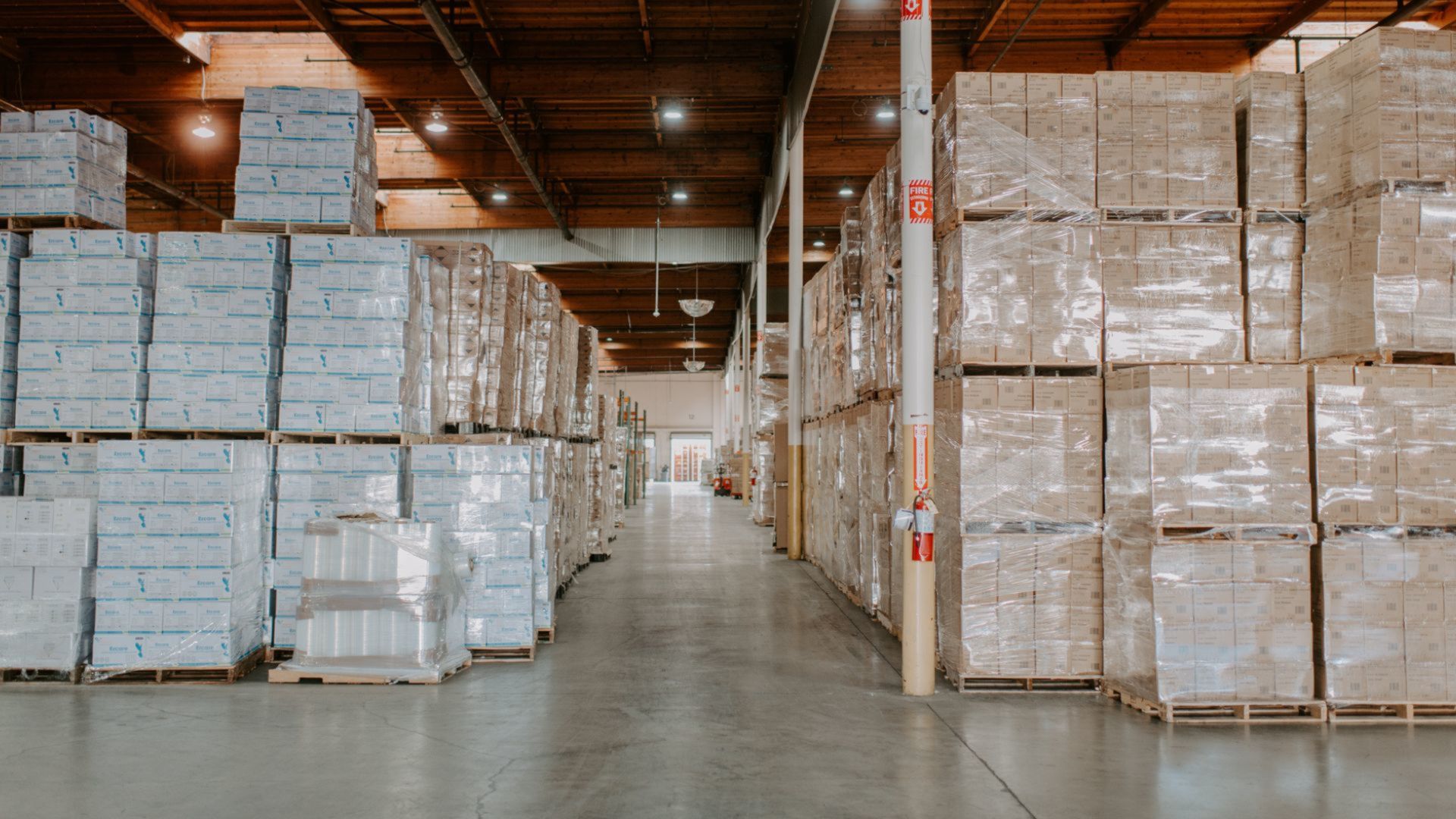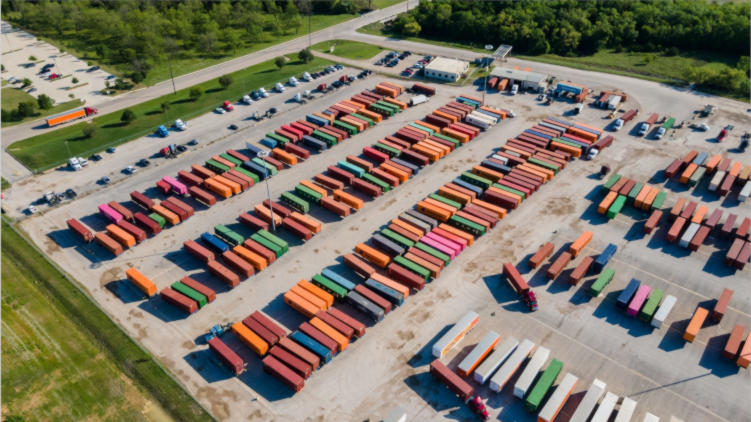Cargo Theft in America: The Rising Threat to Supply Chain Security
1. Threats
CARGO THEFT IS A SERIOUS, GROWING THREAT TO SUPPLY CHAIN SECURITY
Cargo theft throughout the supply chain is surging and criminals are becoming more sophisticated, targeting critical touchpoints such as intermodal facilities, truck yards, warehouses and railroads. Individual “bad actors” as well as Organized Theft Groups (OTGs) are not only exploiting the complexity and fragmentation of today's supply chains but also benefiting from a lack of coordination among local, state, and federal law enforcement agencies. As a result, cargo theft schemes are low-risk, high-reward.
“All aspects of the industry have been touched by theft, but not everyone realizes how much it has increased or the urgent need to address it, ” said Donna Lemm, chief strategy officer for IMC Logistics.
It can be challenging to accurately determine the actual cost of cargo theft because incidents often go unreported or are misclassified. However, experts estimate that criminal enterprises are costing the supply chain up to $35 billion annually.
Strategic Theft
Strategic theft is a form of cargo theft that that involves deception, fraud, cybertheft and other sophisticated tactics. Theft of this nature has risen 1,500% since the first quarter of 2021, and the average value per theft is over $200,000.[i]
Whether directly or indirectly, virtually all trucking companies are victims of cargo theft, according to Bob Costello, chief economist for the American Trucking Associations. “Either they are victims of crime, or they are spending so much money to defend against being targeted that they are still victims, ” he said.[ii]
Beyond the financial cost, cargo theft threatens the overall reliability and integrity of the U.S. supply chain, which affects consumers, manufacturers, retailers, the economy and even national security. Combating cargo theft requires an industry-wide approach that relies on increased communication, consistent enforcement and stronger coordination among local, state and federal law enforcement.
2. Escalation
THE ESCALATING LANDSCAPE
While crimes of opportunity still exist, criminal groups involved in cargo theft are increasingly systematic, turning to strategic theft involving specific targets and seeking out vulnerabilities within the supply chain. “Today’s criminals are exceedingly well organized, employ highly sophisticated techniques and steal high volumes of product at an alarming rate, ” Lemm said.
For intermodal motor carriers, the issue of cargo theft is even more complicated because operations involve cargo movements between various modes of transportation, including ocean, rail and truck. In many cases, it can be challenging to pinpoint where the theft occurs in interstate commerce moves. Cargo is particularly vulnerable during transloading or when cargo remains stationary, but even cargo in transit is vulnerable.
Will Johnson, chief special agent for the BNSF Railway Police Department, told the U.S. Senate Committee on Commerce, Science, and Transportation’s Surface Transportation, Freight, Pipelines, and Safety Subcommittee that suspects are sabotaging rail safety equipment, such as rail traffic signal systems and emergency braking systems, to stop trains in motion to commit cargo theft.[iii]

Within the U.S., 18 million loads are moved by rail annually.[i] The Association of American Railroads estimates that over 65,000 thefts occurred in the U.S. in 2024, representing a roughly 40% increase over the prior year.[iv]
“Prior to 2021, cargo theft was barely on my company’s radar. The isolated cases we encountered involved lone perpetrators stealing relatively small amounts, ” Lemm said. “Virtually every single one of my counterparts across the trucking industry has told me they are experiencing the same challenges.”
While traditional tactics such as pilferage and facility break-ins remain common, criminal groups are employing more advanced, targeted and planned techniques. “The level of sophistication has shifted from petty crime and lone criminals to organized theft groups sabotaging our supply chain, ” Lemm said, adding that OTGs and criminals can empty shipping containers in a matter of minutes.

In many cases, these thefts are a coordinated effort by groups of individuals. Often, they descend on cargo stored within facilities after hours. Despite quick responses from security teams and local law enforcement, the sheer number of people involved in the theft results in a large amount of stolen cargo.
Trucks operating on the road are also at risk. Thieves often track loads and trail drivers, waiting for them to stop to rest or refuel. Criminals are also burglarizing trailers in broad daylight while drivers are stopped at red lights. Supply chain stakeholders may be hesitant to share information about theft, but Lemm said collaboration is crucial in helping to put an end to it.
"The most important thing we can do, both law enforcement and those of us in the industry, is to communicate and provide as much education as possible, " said Tim Farrell, senior vice president of enterprise security for IMC Logistics. “By being transparent about what we’re seeing and experiencing, we can protect future shipments and improve safety for the entire industry.”
Cargo thieves are constantly adapting their tactics. More are becoming technologically adept and are turning to strategic theft involving deception, digital impersonation and cyber fraud to exploit vulnerabilities in the supply chain. The internet, and especially the dark web, has become a source of intelligence for criminals. Many operations begin with indepth research into how a company operates, including learning about a carrier's routing, technology, procedures, contact information and team members.
Fictitious pickups where perpetrators falsely claim to work for a carrier have become increasingly common. Criminals are impersonating legitimate businesses, spoofing their email addresses or using similar email addresses to place illegitimate delivery orders and hijack loads.
They are also creating counterfeit driver's licenses and outfitting equipment with fake placards to impersonate a real motor carrier to steal loads and chassis. “The ease with which fraudulent players can piggyback on publicly accessible data is alarming, " Lemm said.
Thieves are also receiving legitimate USDOT and Motor Carrier (MC) numbers from the Federal Motor Carrier Safety Administration (FMCSA), which is responsible for regulating motor carriers. They use their credentials to book loads with the intention of stealing the cargo.
Historically, thieves could receive legitimate USDOT and Motor Carrier (MC) numbers from the Federal Motor Carrier Safety Administration (FMCSA), which is responsible for regulating motor carriers. They use their credentials to book loads with the intention of stealing the cargo.
In an effort to reduce the automatic issuance of fraudulent MC numbers, the FMCSA introduced a new identity verification process. All new applicants registering for a USDOT Number in the current Unified Registration System (URS) will be required to submit a facial scan to verify their identity. [xii]
Further, effective October 1, 2025, the FMCSA will no longer be issuing Motor Carrier numbers and will only use the USDOT number as the sole identifier of registrants. The agency is hopeful that this action will prevent fraudulent activity by carriers with a bad safety record from shutting down only to reopen under a new MC number, as all authority records will be tracked under the single USDOT number. [xiii & xiv]

If fraud is detected, some carriers will exit the market and then return with a new MC number, but they remain domiciled at the same address. Some carriers have been known to use addresses that point to vacant lots, and there have been cases where a dozen carriers share the same physical address or IP address, which can be a red flag for potential fraud.
FMCSA currently lacks the authority to impose civil penalties or proactively remove fraudulent actors from its systems. Rep. Todd Young (R-Indiana) is among those who have acknowledged that FMCSA currently does not have "adequate protection” to identify fraudulent actors or remove them from its system. Nor does the agency have the statutory authority to assess civil penalties for violations of its safety or commercial regulations.”[vi]
“We need a more rigorous, real-time vetting process from the
FMCSA that reflects the risks of today’s supply chain.”
– Donna Lemm, Chief Strategy Officer, IMC Logistics

3. Obstacles
OBSTACLES IN ENFORCEMENT
Despite the scale of the problem, law enforcement faces several challenges that can complicate their response. Cargo thefts often cross state lines, which requires coordination between multiple agencies. Effective coordination can be difficult, which hides the true scope of OTGs and connections to broader criminal networks.
At the local level, police frequently misclassify cargo theft as vandalism based on a cut fence or damaged container, and consider it an insurance matter while overlooking signs of organized criminal activity. Local police also face competing priorities for resources and may not always dedicate those resources to cargo theft, especially if they are unaware of its wide-reaching impact.
In one case affecting IMC Logistics, cargo thieves stole two containers of refrigerators. Local police filed a report, but no further follow-up occurred. Several months later, federal law enforcement raided a warehouse and stumbled across the appliances, which were being stuffed with cash to smuggle money across the southern border under the guise of “scratch and dent” returns. What appeared as a minor, local crime was a central element of a much larger transnational criminal conspiracy.
Greater coordination between local, state and federal authorities could help uncover essential connections to other crimes. It would also help quantify losses, which can lead to felony charges that garner more interest from prosecutors.
Cargo theft from interstate or foreign shipments can also result in federal charges under 18 U.S.C. § 659, which carries a potential prison sentence of up to 10 years if the value of the stolen property is $1,000 or more. The FBI investigates thefts based on federal laws, not a specific monetary threshold. However, in practice, the FBI and other federal agencies prioritize cases based on their potential harm and their broader national impact, which leaves many thefts unaddressed.
"The lack of a coordinated federal strategy for cargo theft enforcement and prosecution leads to inconsistent responses across jurisdictions and agencies. Organized crime groups are well aware of these enforcement gaps, and they are using them to their advantage, ” Lemm said.

EDUCATION AND ACTION
The Combating Organized Retail Crime Act (CORCA) would establish a coordinated multi-agency response and equip law enforcement with new resources to address the surge of cargo theft incidents happening across the country. The bill (S. 1404), which was authored by Sen. Chuck Grassley (RIowa) and Sen. Catherine Cortez Masto (D-Nevada) in the Senate (S.1404), strengthens legal frameworks, enhances law enforcement capabilities, and promotes collaboration among federal, state and local agencies.
More importantly, it designates the Department of Homeland Security to lead a unified national strategy, helping law enforcement connect the dots in investigating and prosecuting organized theft operations that threaten supply chain security. It has 26 bipartisan Senate cosponsors and is endorsed by 38 state attorneys general. Rep. David Joyce (R-Ohio) and Rep. Susie Lee (DNev.) are leading companion legislation in the House of Representatives (H.R.2853). [ix]
Additionally, Sen. Deb Fisher (R-Nebraska) has introduced the Household Goods Consumer Protection Act that would give FMCSA the tools needed to protect consumers from fraud by scammers in the interstate transportation of household goods.
"Cargo theft will continue to metastasize unless Congress recognizes the severity of the problem, law enforcement devotes sufficient time and resources, and the federal government takes a leading role in coordinating enforcement efforts," Lemm said while addressing lawmakers at a Senate hearing. “We know there is a need for data sharing, and that is why these bills are important.”
JOIN THE FIGHT AGAINST CARGO THEFT
IMC Logistics strongly supports the proposed Combating Organized Retail Crime Act, which would provide law enforcement with critical tools to help crack down on criminal cargo networks. We urge you to make your voice heard. Contact your Senators and Representatives today and ask them to support the legislation.

4. Strategies
STRATEGIES TO REDUCE THEFT
In addition to pushing for more coordinated enforcement, carriers and intermodal providers are intensifying their efforts to deter criminals and protect shippers' loads. Preventing cargo theft requires a layered, multi-pronged approach that focuses on proactive prevention and a rapid, effective response in the event of a theft or attempted theft.
Reducing risk starts with identifying highrisk scenarios and weak points in the supply chain, such as unsecured yards, rail facilities and extended dwell times. IMC believes in addressing vulnerabilities through a combination of technology, tight operational controls and ongoing employee training. "We invest millions of dollars in multilayered security, including surveillance equipment, barriers, tracking technology, engine immobilizers, SOS buttons for drivers, security guards and more, " Lemm said.
Real-time visibility is one of the most effective tools to improve cargo security. Asset-based tracking and RFID tags can detect unauthorized route deviations and automatically trigger risk alerts. “We know immediately if a load is deviated, ” Farrell said, adding that IMC tracks all load information in their proprietary transportation management system.
IMCCOMPASS INCREASES VISIBILITY
IMC Logistics strongly supports the proposed Combating Organized Retail Crime Act, which would provide law enforcement with critical tools to help crack down on criminal cargo networks. We urge you to make your voice heard. Contact your Senators and Representatives today and ask them to support the legislation.
Lemm has also campaigned in support of ocean carriers providing better visibility on cargo moving on a thru bill of lading. “We are still struggling with our export containers with blind spots, including late confirmation of what is loaded on the vessel. Cargo arrives at destination with seal discrepancies and sadly at times cargo missing. Where is this happening? These gaps are opportunities for bad actors to exploit. Greater accountability at every step in the supply chain will help fight cargo theft, " she explained. On-site security, including state-of-the-art cameras, lighting and detection systems, can help keep warehouses, yards and perimeters secure. "The more we can detect, the more we can deter, " Farrell said, adding that even a single person loitering outside a facility is considered a threat. "Cell phones make it easy for criminals to report information about what they're seeing."
People remain one of the most valuable security assets and ongoing training ensures team members know how to recognize and spot and respond to suspicious behavior. In addition to regular training, sending staff bulletins about geographic trends, general unrest or high-risk windows, such as holidays, can increase awareness.
People are often the first line of defense, so constant vigilance is essential. One common tactic is to trigger alarms repeatedly over time, causing those on site to become less responsive and increasing the chance that a real theft could go unnoticed.
"Our alarm systems and fence systems are checked systematically throughout the day at every location to make sure everything is operational. We understand that every alarm set is a real scenario, " Farrell said. "Our operations center is looking for those little indicators and picking up breadcrumbs [for evidence]."
With digital threats on the rise, cybersecurity is essential. Encrypted communications and staff training on verifying information can help reduce the risk of strategic theft.
Operational discipline also plays a significant role in minimizing theft risks. Standard procedures include refusing entry to staff without badges and limiting team members' access to sensitive information, which ensures information about cargo isn't readily available to those who don't need it.
Supply chain handoffs are known risk points. IMC Logistics verifies load handoffs through multiple channels, including physical IDs and driver rosters, and never allows emails to dictate changes. Verifying load confirmations through known preapproved corporate contacts is a widely recommended best practice.
Risk can increase if cargo is subject to extended dwell times. Better chassis provisioning can help keep cargo moving, but dwell times can increase if there is a shortage of chassis, which happened during the COVID-19 pandemic. Currently there aren't long waits, but future disruptions could create backlogs that increase the risk of theft.
SMARTSTACKS KEEP CARGO MOVING
IMC Logistics’ SmartStacks utilizes real-time data and predictive analytics to increase cargo container movement and significantly decrease dwell times. The technology increases visibility, improves planning and has decreased container dwell time from 12 days to under two days, keeping containers and the supply chain moving.
Thieves frequently track loads, so drivers should arrive at the pickup location fully fueled, fed, rested and with enough legal driving hours to travel for several hours. Once it is time to stop, well-lit, fenced parking areas can help keep cargo safe. However, there are no minimum standards associated with secure yards, so drivers should always be aware of their surroundings.
Lemm emphasized the need for greater collaboration and data sharing across the industry so stakeholders can alert one another to potential threats and coordinate more effective responses.
Ideally, we will find a way to alert other stakeholders of potential thefts and threats and sound a yellow alarm of caution to say, 'We had an attempted breakin, and this is what it looked like. Please be aware, '" she said.
Collaboration with law enforcement is another critical component of cargo theft prevention. One of the most effective strategies is establishing direct communication channels with local, state and federal law enforcement agencies. Additionally, active participation in cargo theft task forces and regional security councils creates structured opportunities to share intelligence on emerging theft trends, tactics and high-risk areas.
5. The Road Ahead
THE ROAD AHEAD
These connections enable quick reactions to thefts and suspicious activity. Speed in sharing information or reacting to a theft is critical. The best chance of recovery occurs within the first 24 hours after cargo goes missing. "Once those items are dispersed, especially for apparel and food products, they are difficult to recover," Farrell said.
Cargo theft is a shared threat that affects every link in the supply chain, and more must be done. No individual company can solve cargo theft alone. Greater coordination and information sharing, not only among supply chain stakeholders but also between law enforcement and regulatory agencies, is crucial to uncovering the scope of organized crime, identifying trends and tackling the ever-evolving threat of cargo theft.
If your business has been impacted by cargo theft or if you’re concerned about potential risks, IMC Logistics is here to help. Our team can provide insight, guidance and security-minded solutions tailored to your supply chain.

Thank You!
imcc.com
Sources
i. National Insurance Crime Bureau. On the Rise: Cargo Theft, a Billion Dollar Industry.
https://www.nicb.org/news/blog/rise-cargo-theft-billion-dollar-industry.
ii. Verisk CargoNet. (2025, January 21). 2024 supply chain risk trends analysis. CargoNet. https://www.cargonet.com/news-andevents/cargonet-in-the-media/2024-theft-trends/.
iii. Wolf, C. D. (2024, October 4). Cargo theft experts warn of peak season fraud. Transport Topics.
https://www.ttnews.com/articles/cargo-theft-season.
iv. American Trucking Associations. (2025, April 29). ATA continues push for cargo theft crackdown on Capitol Hill.
https://www.trucking.org/news-insights/ata-continues-push-cargo-theft-crackdown-capitol-hill
v. U.S. Senate Committee on Commerce, Science, and Transportation. (2025, February 27). Grand theft cargo: Examining a costly
threat to consumers and the U.S. supply chain [Hearing document]. https://www.commerce.senate.gov/services/files/227DF9F8-
46BF-4650-905A-89B5B0B041D0
vi. Intermodal Association of North America. What is intermodal? https://www.intermodal.org/what-intermodal
vii. Association of American Railroads. Cargo theft. https://www.aar.org/issue/cargo-theft
viii. Young, T. (2024, December 7). Cargo theft is a growing national security issue [Press release]. U.S. Senator Todd Young.
https://www.young.senate.gov/newsroom/press-releases/young-op-ed-cargo-theft-is-a-growing-national-security-issue
viiii. World Population Review. Felony theft amount by state 2025. https://worldpopulationreview.com/state-rankings/felonytheft-amount-by-state
x. U.S. Department of Justice. Criminal resource manual 1333: General overview – Theft from interstate shipment.
https://www.justice.gov/archives/jm/criminal-resource-manual-1333-general-overview-theft-interstate-shipment
xi. U.S. Senate Committee on the Judiciary. (2025, July 21). Support grows for Grassley’s Combating Organized Retail Crime Act
[Press release]. https://www.judiciary.senate.gov/press/rep/releases/support-grows-for-grassleys-combating-organized-retailcrime-act
xii. Identity Verification | FMCSA - https://www.fmcsa.dot.gov/registration/identity-verification
xiii. FMCSA Ditches MC Numbers: What Carriers Must Know - FreightWaves - https://www.freightwaves.com/news/what-it-means-for-the-industry-as-fmcsa-eliminates-mc-numbers-in-2025
xiv. Registration Modernization FAQs | FMCSA - https://www.fmcsa.dot.gov/registration/modernization-faqs

